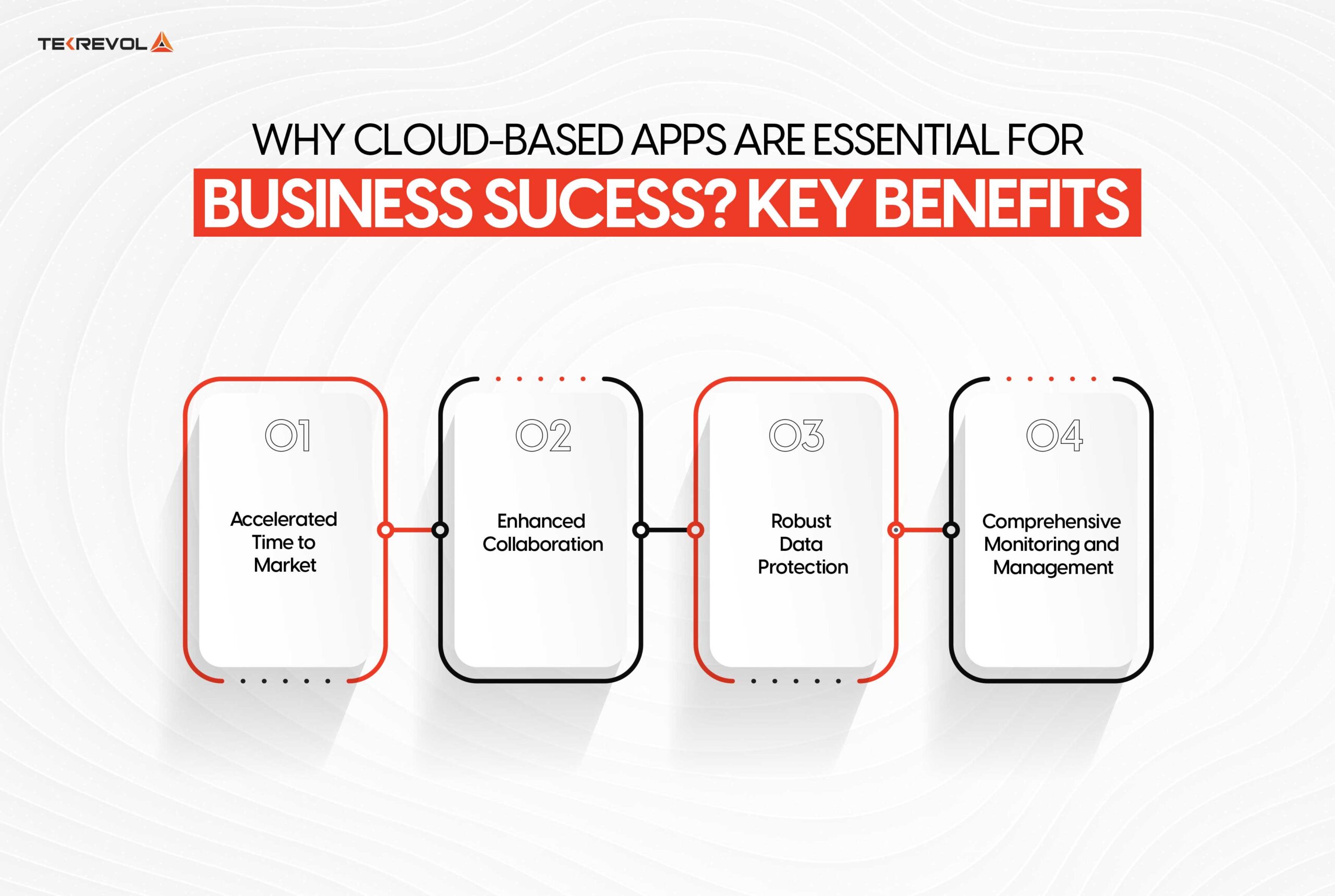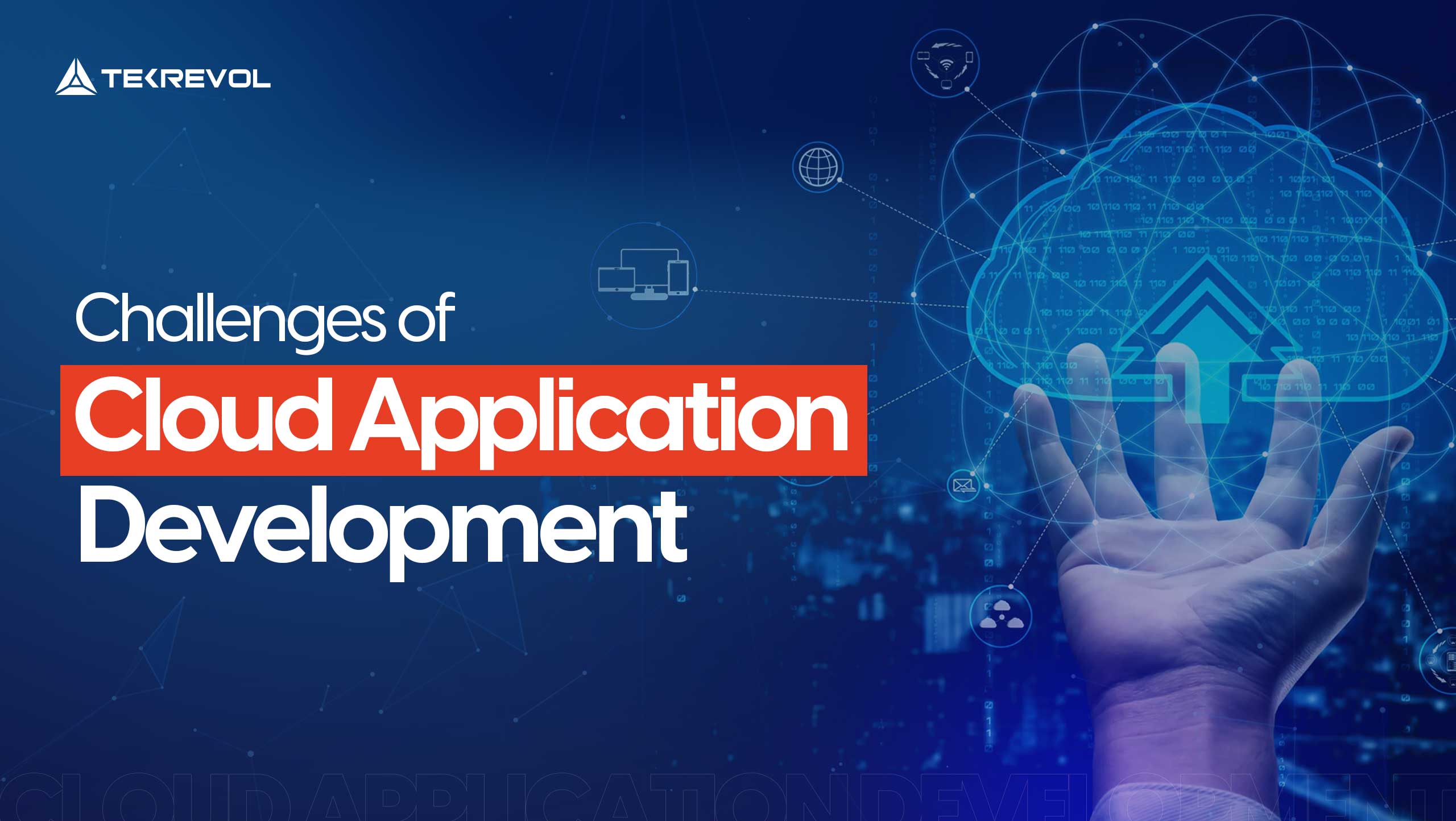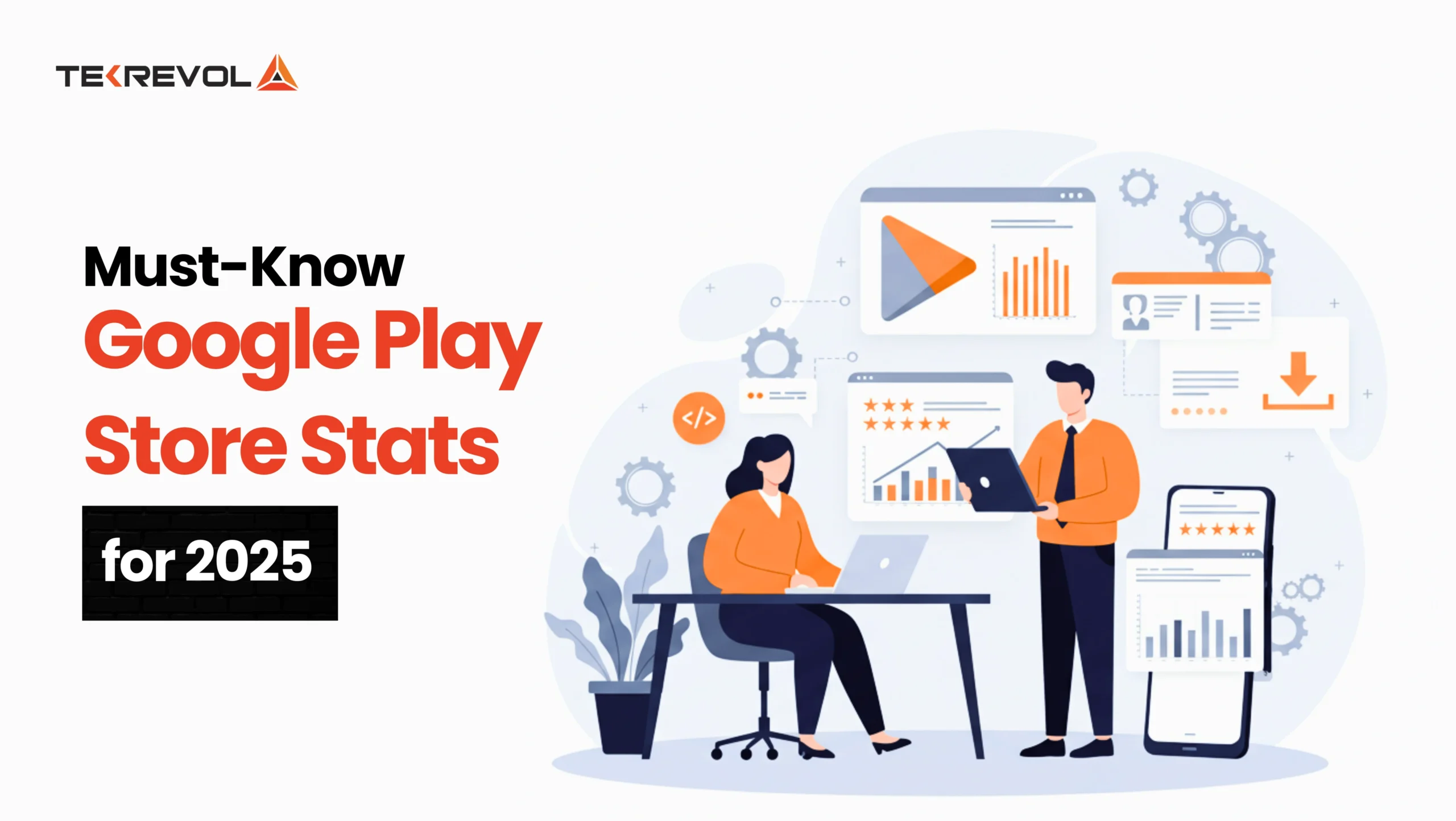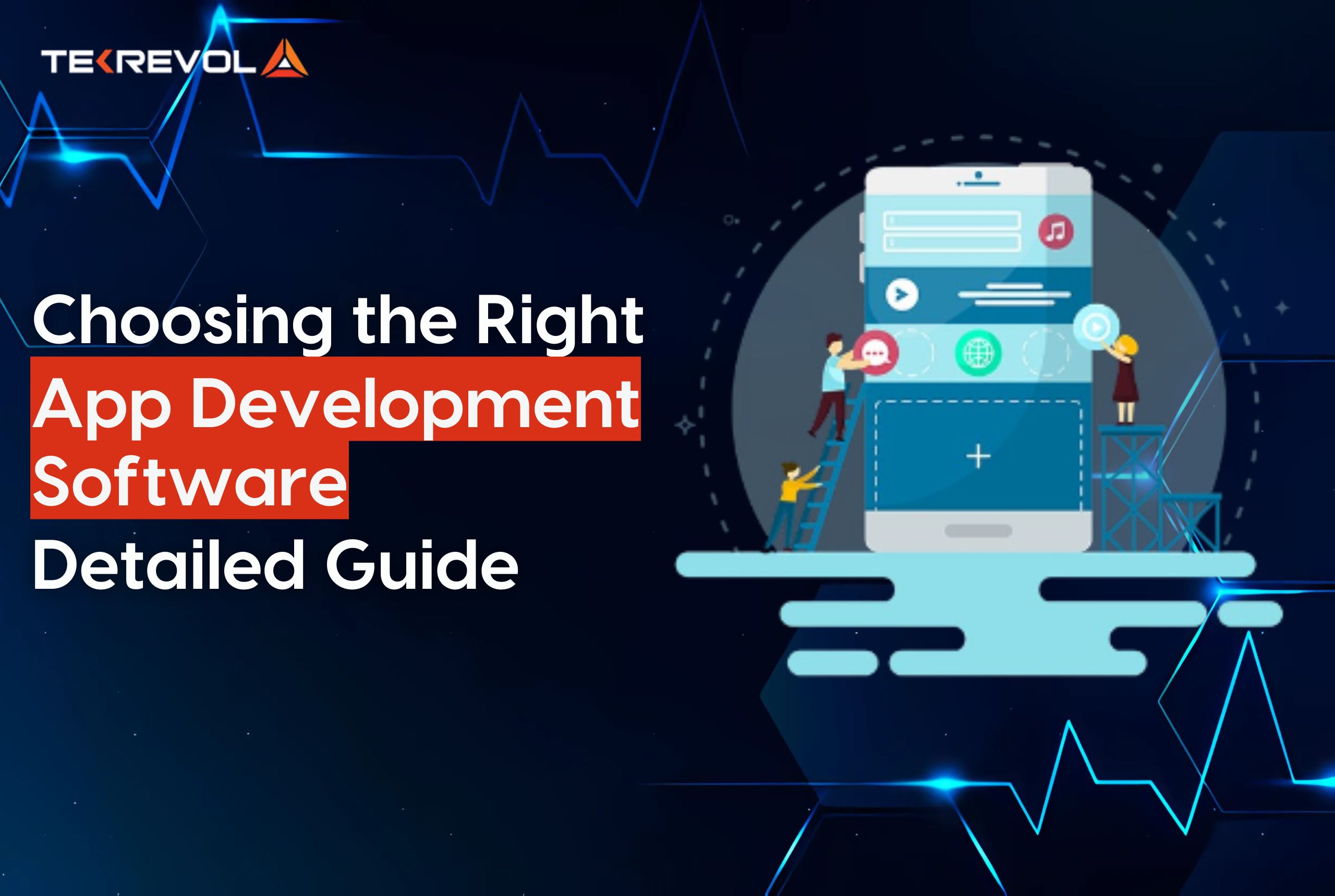The world is migrating to the cloud at a rate that has never been seen before, but have you ever considered what it takes to build a reliable, high-performing cloud application? Although cloud technology offers flexibility and scalability, creating apps on these platforms poses a special set of difficulties that can be difficult, even for experienced developers.
As cloud investments climb towards a projected $1 trillion by 2030, companies must enhance their optimization, security, and innovation strategies.
For many companies—whether starting from scratch or shifting from traditional IT infrastructures—there are distinct challenges ahead in cloud application development that can complicate the adoption process.
These challenges come in various forms and intensities, depending on the organization’s unique circumstances. While some obstacles may seem manageable, others can be quite severe and should always be considered.
To ease these challenges, businesses should consider leveraging cloud application development services that can streamline their processes and improve efficiency.
In this blog, we will explore cloud application hurdles and provide valuable insights on how to overcome them effectively.
- Need help navigating cloud complexities??
- TekRevol supports you in tackling cloud challenges with innovative, personalized solutions.
What is Cloud Application Development?
Cloud application development refers to the development of applications fully within cloud infrastructure, where the deployment of cloud services is made for data storage, computation, and network management. This approach enables rapid development cycles, testing, and deploying without reliance on physical equipment.
According to Gartner, 95% of new digital workloads will be cloud-native by 2025, underlining the accelerating trend toward cloud-focused solutions.
Do you ever wonder why cloud technology is crucial for digital transformation? Companies use the cloud’s features to increase scalability, enhance security, and simplify management, which boosts productivity, lowers expenses, and adapts to changing business needs.
Key Components of Cloud Application Development
Microservices Architecture: Currently, most cloud applications are developed using microservices which divide an application into individual components. It allows the individual services to be updated, deployed, or scaled independently thus enhancing the resilience and agility of the application.
Containerization: Solutions like Docker and Kubernetes allow cloud applications to run in containers, which serve as isolated units encompassing the application code and all its dependencies. It acts as a layer on top of the applications, helps in providing a similar structure to different surroundings, such as development, increases the reliability of the deployments, and reduces the possibility of errors.
APIs (Application Programming Interfaces): APIs are intermediates that can be used in cloud development to facilitate communication between various components as well as between the cloud application’s internal and external parties. APIs enable the exchange of data and services, integration, and visibility, which are crucial for multi-cloud and hybrid-cloud scenarios.
Orchestration and Automation: Using orchestration tools like Kubernetes to handle containerized services is a common practice in cloud application development. Automation makes it even easier to deploy, scale, and manage environments, which helps save the skill time of development teams by leaving many aspects of infrastructure for them to manage.
Serverless Computing: With the serverless approach, there is no need to manage physical servers because cloud providers handle resources dynamically. This is especially important for applications that work in response to events because the number of required resources changes regularly.
CI/CD Pipelines: CI/CD pipelines are a best practice of cloud application development that allows code changes to be continuously integrated, tested, and then deployed. This allows for a faster development cycle with quicker release and less dislocation.
Why Cloud-Based Apps Are Essential for Business Success? Key Benefits

Cloud computing has come a long way, and cloud application development is now essential for corporate success and growth. Aside from reducing IT expenses, cloud computing solutions can assist an organization to obtain a competitive advantage, improve user experiences, and streamline business processes.
Statista has found that the cloud applications market in the United States is set to hit around $160.9 billion by the end of 2024, with further growth projected to $168.6 billion in 2025.
Regardless of the organization’s size, shifting to the cloud results in increased agility, adaption, and creativity. Let’s take a closer look at the primary benefits of cloud computing for modern enterprises.
Accelerated Time to Market
Time matters greatly in the fast-paced development cycle because any delay will certainly result in cost increases and project delays. Using cloud infrastructure, developers may instantly deploy, test, and terminate instances, dramatically boosting the tempo of development.
Enhanced Collaboration
Cloud solutions allow teams to access data from nearly any location, which significantly affects how work is done. Whether a team member is in the office, remote, or somewhat distant, they can easily log in, contribute, correct, and contribute to files immediately. It not only makes the project run more efficiently, but it also inspires and speeds up the work.
With everyone connected and on the same page via cloud-based solutions, there is speedier decision-making, greater idea-sharing, and improved teamwork inside the firm.
Robust Data Protection
Cloud solutions have built-in redundancies, which prevent loss due to potential hardware or software failure and other disruptions. Generally, cloud-based storage solutions include automatic, multi-location backups that maintain data integrity and recoverability much better than similar on-premises implementations.
Comprehensive Monitoring and Management
Cloud environments give powerful monitoring tools that can monitor applications’ performance, security, and availability constantly. With these tools, one would be able to quickly identify the cloud application issues and resolve problems that may arise before they occur which will overall enhance application performance.
Common Challenges in Cloud App Development & Their Solutions

Cloud application development is fascinating and challenging at the same time. As cloud computing continues to change the digital world, it creates new opportunities while providing challenges for developers.
Every issue that cloud development presents has a technical cause that can effectively change it into an opportunity. Here are some of the driving factors and challenges of cloud application development and how to deal with them:
Interoperability and Portability
The most difficult aspect of cloud development is the ability of apps to work on multiple clouds, which is known as cloud interoperability. Running applications on several cloud infrastructures or switching between providers is hard and costly if they are not designed with portability in mind. Interoperability is also required to allow technologies to function seamlessly across multiple environments.
Solution: Creating an application that transitions seamlessly across various platforms demands the use of standardized practices and consistent data structures. Developers can alleviate multi-cloud strategy complications by adopting widely recognized cloud standards and establishing uniform operating procedures. Focusing on these elements early on can help prevent migration challenges later.
Performance Challenges
With unknown data center locations, the performance of the cloud is hard to predict. Lack of monitoring can delay rendering data, style sheets, and other resources, thus badly affecting the user experience.
Solution: Choose a cloud provider that has a well-documented architecture and is transparent. Test the cloud for end-to-end testing regularly to identify performance-related issues in the cloud as early as possible. Choose the applications that should migrate to the cloud and continuously observe their performance to make sure they align with the effectiveness of your other company apps.
Decoupled Service Architecture
For cloud applications to be scalable and adaptable, a decoupled service architecture is very important. But this is not always easy in a cloud environment. Keeping services loosely coupled from the core service logic can become challenging but is essential for flexibility and reusability.
Solution: Developers must be trained on different cloud protocols and decoupling strategies. Knowing how the vendor services work is also important because the orchestrated behavior between the decoupled components makes the system more resilient to change.
Vendor Lock-In
When a company becomes reliant on a particular cloud provider, it faces vendor lock-in, which can lead to high switching costs and challenges in finding alternatives. This is frequently the result of using services that are specific to one provider, thus constraining flexibility and complicating cost management in cloud development. To alleviate these issues, businesses should focus on strategies that enhance their ability to operate across multiple cloud environments.
Solution: Before making a selection, one should carefully consider the package given by a cloud provider. One should focus on implementing services that are compatible with other clouds and promote compliance with industry standards. This decreases reliance on a single provider while simultaneously increasing flexibility for future changes.
False Promises of Scalability
Scalability is one of the key benefits of using cloud environments, but not all providers can deliver on this promise. If applications are heavily used, the backend must be able to cope with the increased workload levels without losing performance or cost.
Solution: The nature of cloud computing means that choosing a model of setup can be a way of adapting to more varied demands, and the hybrid cloud may be the solution for scaling up. Based on your needs, it enables you to adjust your allotted resources up or down, preventing shortages during periods of heavy traffic or overspending.
Query-Oriented vs. API-Oriented Programming
Some cloud applications are query-oriented and hence very challenging for developers to use object-oriented APIs. Working with federated datasets, event processing, and data streaming are important domains that call for advanced query strategies that go beyond simple SQL expertise.
Solution: Developers should learn about constructing complex queries and regularly use functional, query-oriented methods of data manipulation. By broadening their abilities, they will be prepared for intricate data tasks critical for optimum application performance in the cloud.
Application Security
Over the years, maintaining high levels of security for cloud applications—apart from basic access control has proven to be a difficult undertaking, particularly for clients. Despite advancements, web browser limitations make client-side security difficult, requiring that crucial security tasks be carried out outside of the browser.
Solution: To effectively safeguard data, appropriate encryptions must be used. Deploying a reverse proxy is one method for reducing security risks while implementing suitable security measures such as SSL encryption allows large enterprises to fulfill a high level of security standards. These methods also increase data veracity while reducing threat risks within the browser itself.
As of now, 32% of enterprises use multi-cloud cybersecurity tools to combat the potentially devastating financial consequences of data breaches.
Reliability and Availability
The key measure of a cloud app is how reliably it supports mission-critical tasks most of the time and through disruptions. However, most cloud providers claim not to offer customers uninterrupted service and hence there might be times that the capacity will be out of service hence affecting business.
Solution: Pay close attention to consumption statistics, service-level agreements, performance, and dependability, and note how your business depends on each service to function properly. Ensure that your cloud provider provides adequate protection for your firm and is robust enough to support your activities at all hours of the day and night.
Complexity in Cloud Migration
Transitioning to the cloud can be difficult and also can experience some issues especially when the project involves applications that are outdated or data intensive. Migrating workloads and applications to another cloud environment can take a considerable amount of time to redesign them to suit the new architecture, security model, and compatibility requirements and can be disruptive if not managed properly.
Solution: To ascertain the new platform’s compatibility, workload, and security requirements, the cloud migration evaluation should be completed first. By using the right cloud migration services,which offer specialized tools and advice for secure data transfer, businesses can greatly simplify this process. Adopting a staged migration strategy is the best course of action because it minimizes company risks and facilitates a smooth transition.
- Struggling with cloud application hurdles?
- Our cloud experts will help you identify issues and implement effective strategies!
Key Measures for Securing Cloud-Based Software Development
Moving workflows to the cloud is one of the most major advances in software development, and it has serious security consequences. If you have concluded that you need to improve your cloud security, here are some terrific things to consider.
1. Set Up Clear Governance Policies
Governance policies are of utmost importance in the development of cloud software for security. These policies are clearly stated procedures and guidelines that help employees understand their responsibilities in maintaining security.
When these policies are in line with the internal security requirements of your company, they form a coherent structure to define how everyone should function. This makes security uniform across the organization and is more transparent and easier to follow. In the end, it helps create a safer and more secure environment for all team members.
2. Segment Your Network
The concept of network segmentation is associated with the placement of barriers in a big network. It allows you to contain potential security problems because your network is divided into multiple portions. This increases the amount of mobility that an attacker has in your system, hence increasing the hazards. You can also apply special controls to traffic between segments that allow for the sharing of necessary resources while denying other unnecessary traffic.
3. Automate Security Processes
The greatest ally in terms of cloud security is automation. When code analysis is done automatically throughout the development and testing stages, trouble spots can be found sooner. To automate certain configurations, Infrastructure-as-Code must be used. Automated threat responses reduce the risk of harm by enabling quick reactions to threats without requiring manual control.
4. Stay on Top of Vulnerability Management
One of the most important aspects of maintaining the security of cloud apps is doing vulnerability assessments regularly. There is always a need to conduct vulnerability and penetration testing to detect any vulnerabilities that hackers could exploit. Make sure that your apps do not feature any exploitable capabilities, and that the end product you sell does not contain any evident remote code execution gaps for consumers.
5. Conduct Regular Security Audits
Proper security measures should correlate with a firm’s set policies. Whenever these two are misaligned, people end up experiencing things like cyber security threats and risks. Security audits or reviews should be standard procedures when forming your security plan. Such assessments not only determine the policies’ strengths and weaknesses but also contribute to setting standards and tracking change.
How TekRevol Helps You Overcome Cloud Development Challenges?
As a cloud application development company, we understand that managing the problems and complexities of the cloud is not easy. That is why we begin with a risk assessment to identify the flaws in your infrastructure and provide you with a proper security strategy based on the type of business you have.
Our focus on identity and access management includes features like multi-factor authentication, which ensures that only the right individuals have access to your sensitive information.
However, we do not limit ourselves to just security measures. We are here to make your cloud migration as simple as possible, providing you with the essential advice and resources to complete it. Once your apps are up and running, we provide the support, tracking, and customization services required for growth.
- Ready to simplify your cloud journey?
- TekRevol offers the expertise and support you need to succeed.

 2545 Views
2545 Views November 1, 2024
November 1, 2024









